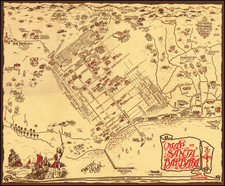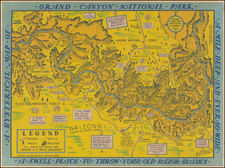Interesting tourist promotional map and brochure for Whidbey Island, Washington.
The cover graphic and images suggest that at least part of the target audience were visitors and military families stationed at Whidbey Island Naval Air Base.
While a search for a suitable naval air base in the area had begun in January, 1941, the Whidbey Island Naval Air Base was first surveyed on December 8, 1941, 1 day after the attack on Pearl Harbor. Construction of Ault Field began on March 1, 1942 and the first plane landed on August 5, with the base officially opened on September 21, 194
The decision to construct a naval air station on Whidbey Island was influenced by several factors, chief among them its geographic proximity to the Pacific Ocean. In a context where the U.S. Navy was rapidly expanding its airpower to contend with Axis naval forces, Whidbey Island was an optimal location for launching long-range reconnaissance missions and anti-submarine warfare patrols. Indeed, within a year of its establishment, the base became home to patrol squadrons equipped with the PBY Catalina, a versatile seaplane that played a crucial role in Pacific naval operations.
During the late 1940s, following the conclusion of World War II, the base underwent a period of downsizing but was preserved due to its strategic importance. It would not be until the advent of the Korean War that Whidbey Island Naval Air Base would see a resurgence in its operational activities. With the U.S. Navy now confronting new geopolitical challenges in East Asia, Whidbey Island pivoted to support jet aircraft. The transition was emblematic of broader shifts within military aviation, transitioning from propeller-driven aircraft to more advanced, jet-propelled models. Squadrons based at Whidbey played an active role in naval operations off the Korean Peninsula, underlining the base's continued strategic relevance.














![Los Angeles Ambassador [Hotel Ambassador]](https://storage.googleapis.com/raremaps/img/small/97008.jpg)
![[ East Village Art Scene ] Artropoly East Village 85. A guide. A documentary](https://storage.googleapis.com/raremaps/img/small/55849.jpg)
